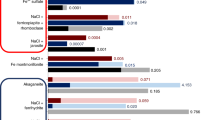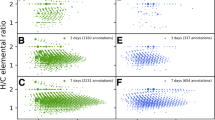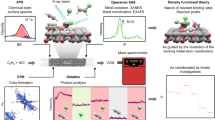Abstract
DURING the past few years, there has been a growing interest in the differences in reaction-rates which arise from isotopic substitution. Attention has been largely focused on the isotopes of carbon, nitrogen and oxygen1, but recently the effect has been demonstrated for heavier atoms, in particular for the isotopes of sulphur2.
This is a preview of subscription content, access via your institution
Access options
Subscribe to this journal
Receive 51 print issues and online access
$199.00 per year
only $3.90 per issue
Buy this article
- Purchase on SpringerLink
- Instant access to full article PDF
Prices may be subject to local taxes which are calculated during checkout
Similar content being viewed by others
References
For review articles, see Ropp, G. A., Nucleonics, 10, No. 10, 22 (1952), and Bigeleisen, J., J. Phys. Chem., 56, 823 (1952).
Sheppard, W. A., and Bourns, A. N., Can. J. Chem., 32, 4 (1954).
Nier, A. O., and Hanson, E. E., Phys. Rev., 50, 722 (1936).
Author information
Authors and Affiliations
Rights and permissions
About this article
Cite this article
BARTHOLOMEW, R., BROWN, F. & LOUNSBURY, M. Chlorine Isotope Effect. Nature 174, 133 (1954). https://doi.org/10.1038/174133a0
Issue Date:
DOI: https://doi.org/10.1038/174133a0



